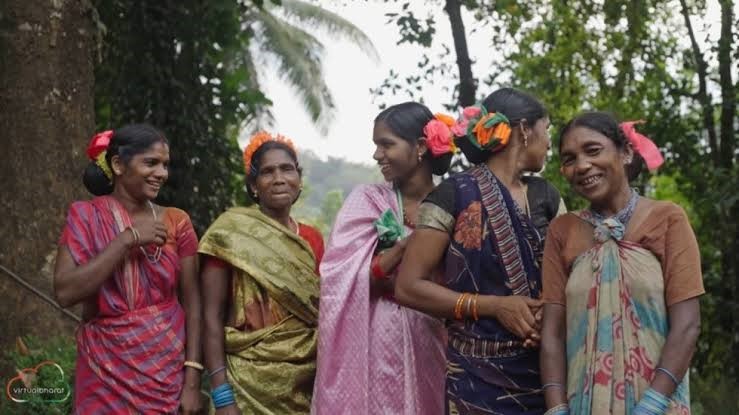
Muthuvan tribe

19.10.2023
Muthuvan tribe , Daily Current Affairs , RACE IAS : Best IAS Coaching in Lucknow
|
For Prelims: Muthuvan tribe, Nilgiri Tahr, Eravikulam National Park For mains GS paper 1: History of the Muthuvan Tribe ,Nilgiri Tahr project,Objectives of the Project |
Why in the news?
According to the Tamil Nadu Forest Department, Muthuvan tribe will be part of Nilgiri Tahr conservation project.
History of the Muthuvan Tribe
- They migrated to the Western Ghats around 300-400 years ago, during the reign of the Madurai dynasty. When the dynasty was deposed, the surviving royal members shifted to Travancore in central Kerala, and the Muthuvans carried the idols of Madurai Meenakshi, the deity of the royal family, on their backs.
About the Muthuvan tribe:
- These people live in the border hill forests of Kerala and Tamil Nadu.
- They speak slightly different dialects and call each other Malayalam Muthuvan and Pandi Muthuvan.
- The Muthuvan have six matrilineal clans (Koottams), viz. Melae koottam, Kana koottam, Thushani koottam, Kanya koottam, Elli koottam and Puthani koottam with hierarchical order. Each koottam is again divided into six lineages.
- The functions of these divisions are mainly for a marriage alliance, to keep up the social status and to indicate descent and ancestry.
- They are mainly a landowning community.
- They are animists and spirit worshippers and also worship the forest gods.
- They believe that the spirits of their ancestors were the first migrants to the hill forests.
- They are known for coexisting with wildlife with their traditional knowledge.
- These tribal people follow a unique system of governance called the 'Kani System'.
- Under this system, each village is headed by a 'Kani', who is responsible for the administration of the village.
- They are experts in traditional medicines, which are extremely effective, and the medicine is kept confidentially and passed down through generations.
- Occupation: Agriculture is the main occupation of these Muthuvan tribes, producing quite a number of products like ragi, cardamom and lemongrass.
Nilgiri Tahr project
- Under The Nilgiri Tahr project, the Tamil Nadu government plans to develop a better understanding of the Nilgiri Tahr population through surveys and radio telemetry studies, reintroduce the Tahrs to their historical habitat, address proximate threats and increase public awareness of the species
- The project is to be implemented for a 5 year period from 2022 to 2027.
Objectives of the Project:
- Developing a better understanding of Nilgiri Tahr population, distribution and ecology
- Re-introduction of Nilgiri Tahr to their historic habitats
- Addressing proximate threat to Nilgiri Tahr
- Increasing awareness among public about the "Nilgiri Tahr" species
Nilgiri Tahr
- It is an ungulate that is endemic to the Nilgiri Hills and the southern portion of the Western and Eastern Ghats in the states of Tamil Nadu and Kerala in southern India.
- It is the state animal of Tamil Nadu.
- Despite its local name, it is more closely related to the sheep of the genus Ovis than the ibex and wild goats of the genus Capra. It is the only species in the genus Nilgiritragus.
- The animal inhabits meadows with steep cliffs at elevations between 300 meters and 2,600 meters above sea level.
- It is estimated that there are 3,122 Nilgiri Tahrs in the wild.
- Historically, the Nilgiri Tahr was known to inhabit a large portion of the Western Ghats.
- But today it remains restricted to a few scattered patches in Tamil Nadu and Kerala. It has become locally extinct in around 14% of its traditional shola forest-grassland habitat.
- Eravikulam National Park is home to the largest population.
- IUCN – Endangered, Wildlife (Protection) Act of India, 1972 - Schedule I
Threat
- Primarily threatened by habitat loss and disturbance caused by invasive species, and in some sites by livestock grazing, poaching and fragmentation of the landscape.
Eravikulam National Park
- It is located in the Eravikulam and Idukki districts of Kerala.
- It is situated in the Western ghats.
- The national park is famous for Nilgiri Tahr.
- It has the largest population of Nilgiri Tahr.
- Another specialty of Eravikulam national park is the flower that blooms every 12 years.
- The name of the flower is Neelakurinji.
- The national park also takes the name after this magical flower that blooms in this region only.
- Flora: The major part of the park is covered with rolling grasslands, but several patches of shola forests are also found in the upper part of the valley.
- Fauna: The Nilgiri Tahr, Gaur, Sloth Bear, Nilgiri Langur, Tiger, Leopard, Giant Squirrel and wild dog are common.
Source:The Hindu